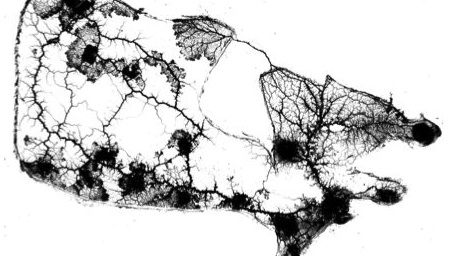Slime Design
A slimy fungus-like mold has revealed to scientists a means of designing superior computer and telecommunication networks, according to astonished scientists. “What could human engineers possibly learn from the lowly slime mold? Reliable, cost-efficient network construction, apparently: a recent experiment suggests that Physarum polycephalum, a gelatinous fungus-like mold, might actually lead the way to improved technological systems, such as more robust computer and mobile communication networks. This revelation comes after a team of Japanese and British researchers observed that the slime mold connected itself to scattered food sources in a design that was nearly identical to Tokyo’s rail system. The related report will be published by the journal Science on 22 January. Atsushi Tero from Hokkaido University in Japan, along with colleagues elsewhere in Japan and the United Kingdom, placed oat flakes on a wet surface in locations that corresponded to the cities surrounding Tokyo, and allowed the Physarum polycephalum mold to grow outwards from the center. They watched the slime mold self-organize, spread out, and form a network that was comparable in efficiency, reliability, and cost to the real-world infrastructure of Tokyo’s train network.”




